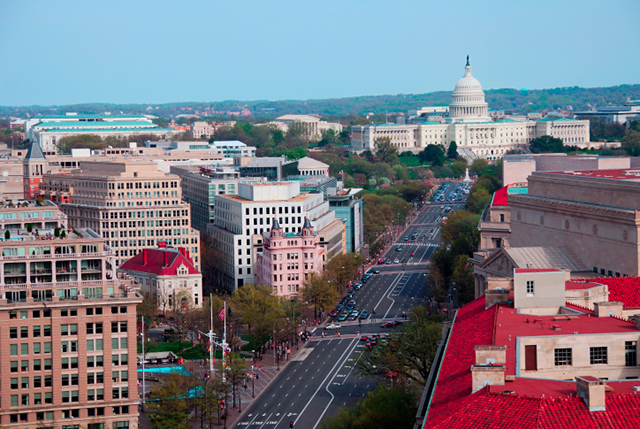When you go to New York City, you probably don’t want to look like a tourist. But you almost can’t help looking up, up, up. There’s a power in Manhattan’s skyscrapers, a spirit of innovation and striving.
The architecture in our nation’s capital, however, is far less interesting.
“Washington is among the most regulated cities on the planet, and the federal and local districts overlap each other in the most astonishing ways,” former Washington Post architecture critic Ben Forgey explained in Washingtonian magazine a few years ago. “Sometimes I feel like the city is being designed by bureaucrats and busybodies.” In many ways that’s true, and it’s led to a sort of bland design that may be utilitarian but certainly isn’t inspiring.
Those busybodies were active at ground level: for years they barred stores or restaurants in federal buildings. That turned entire blocks into “food deserts,” and it tended to drive tourists away from large parts of D.C.
The same busybodies also turned their eyes skyward. But not to inspire; to block inspiration. Because of a century-old federal law, no building may reach higher than 130 feet. And if a residential building happens to have a penthouse, it may not be occupied. It may only be used to house equipment (HVAC, elevators, etc.).
The height restrictions have had at least one positive effect. Key landmarks, including the Washington Monument and the Capitol dome, are visible from all over the city. But even with the height restriction in place, it would still be possible to boost property values by allowing owners to rent or sell their penthouses.
Recently, the House of Representatives took a step in that direction. It passed a slight change to the 1910 law that keeps the height limit in place: “except in the case of a penthouse which is erected to a height of one story of 20 feet or less above the level of the roof.”
This sensible change wouldn’t change the way the city looks from street level, and you’d still be able to spot key landmarks from many vantage points. But it would begin to roll back the red tape that has long enveloped development in D.C. Every journey, even an upward one, begins with a small step.






























